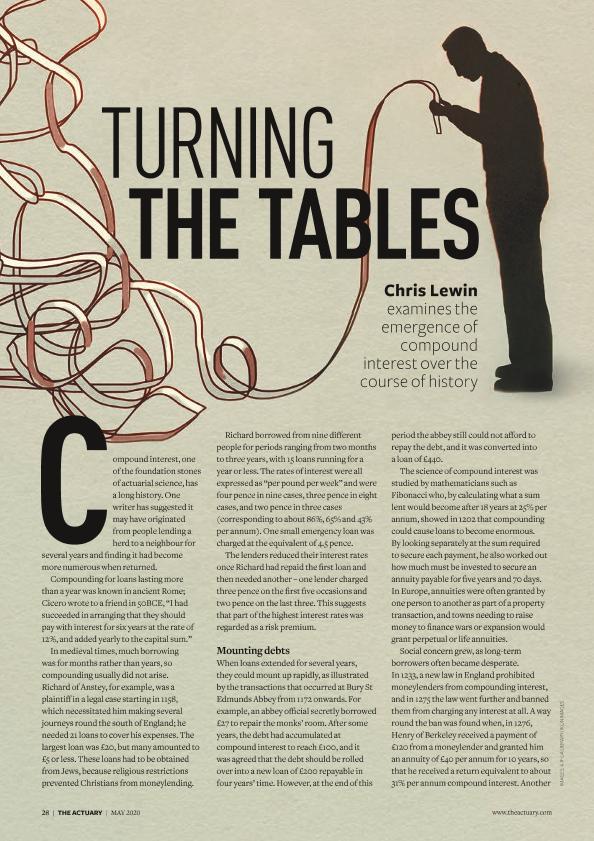Turning the tables

Contenido multimedia no disponible por derechos de autor o por acceso restringido. Contacte con la institución para más información.
| Tag | 1 | 2 | Value |
|---|---|---|---|
| LDR | 00000cab a2200000 4500 | ||
| 001 | MAP20200016083 | ||
| 003 | MAP | ||
| 005 | 20200512180016.0 | ||
| 008 | 200511e20200501gbr|||p |0|||b|eng d | ||
| 040 | $aMAP$bspa$dMAP | ||
| 084 | $a6 | ||
| 100 | $0MAPA20200011163$aLewin, Chris | ||
| 245 | 1 | 0 | $aTurning the tables$cChris Lewin |
| 520 | $aCompound interest, one of the foundation stones of actuarial science, has a long history. One writer has suggested it may have originated from people lending a herd to a neighbour for several years and finding it had become more numerous when returned. Compounding for loans lasting more than a year was known in ancient Rome; Cicero wrote to a friend in 50BCE, I had succeeded in arranging that they should pay with interest for six years at the rate of 12%, and added yearly to the capital sum. In medieval times, much borrowing was for months rather than years, so compounding usually did not arise. | ||
| 650 | 4 | $0MAPA20080578374$aTasas de interés | |
| 650 | 4 | $0MAPA20080602437$aMatemática del seguro | |
| 650 | 4 | $0MAPA20080579258$aCálculo actuarial | |
| 650 | 4 | $0MAPA20080592011$aModelos actuariales | |
| 773 | 0 | $wMAP20200013259$tThe Actuary : the magazine of the Institute & Faculty of Actuaries$dLondon : Redactive Publishing, 2019-$g01/05/2020 Número 4 - mayo 2020 , p. 28-29 |

